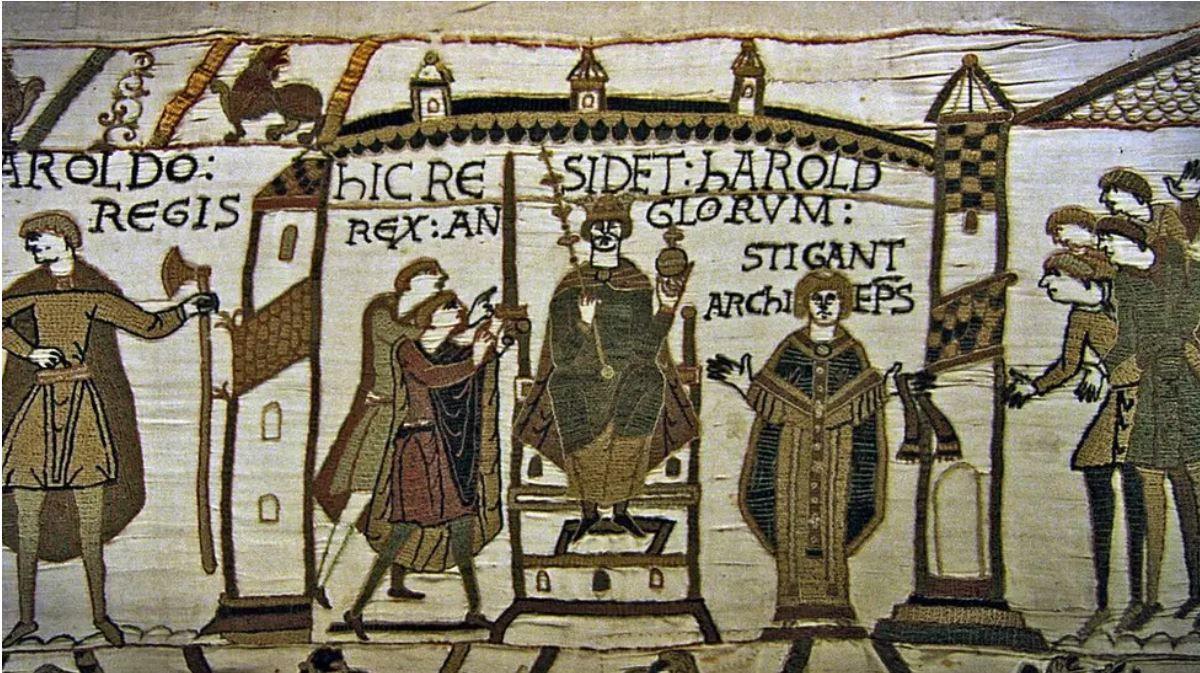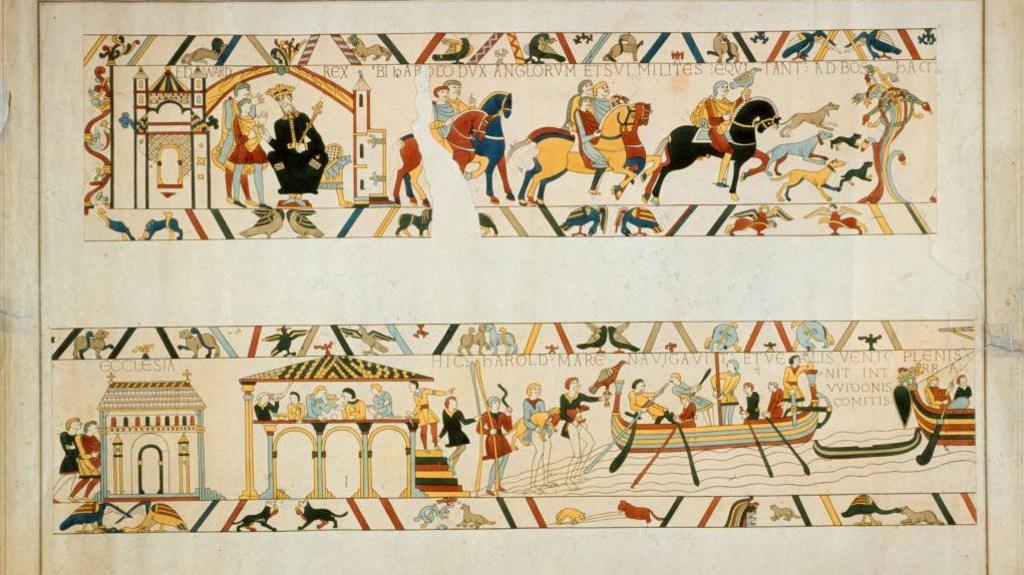'Lost' king's palace found... thanks to a posh toilet

Part of the Bayeux Tapestry, showing Harold being crowned King of England, before he was killed at the Battle of Hastings
- Published
Archaeologists have found a house on the coast of West Sussex which they think is the long lost palace of Harold Godwinson, the last Anglo-Saxon King of England.
King Harold only ruled for nine months before he was killed in the Battle of Hastings in 1066 - nearly 1,000 years ago.
The mystery of where he lived is included in a famous piece of artwork known as the Bayeux Tapestry, which is like an ancient comic strip of the famous story.
But now a team from Newcastle University and the University of Exeter believe they've found a "power centre" belonging to King Harold - and it's all thanks to the help of a medieval toilet.
More about the Battle of Hastings
The Battle of Hastings explained: 950 years later
- Published13 October 2016
What is a Unesco Memory of the World?
- Published17 January 2018
New kids' Bayeux Tapestry revealed
- Published1 August 2016
What did the Bayeux Tapestry tell us about King Harold's base?

King Harold (top right) can be seen in the Bayeux Tapestry, holding a hawk
The Bayeux Tapestry tells the story of the Norman Conquest of England, when William the Conqueror successfully challenged Harold for the throne.
Bosham is a village on the coast and is shown twice in the tapestry as the place where King Harold enjoys a feast in an extravagant hall.
The exact location has never been proven, although it has been suggested that a manor house, which is now a private home, stands on the site.
How archaeologists were helped by a toilet

King Harold's home was once part of a more extensive group of buildings - including a church which still survives
The team tried to unpick the early history of the house by re-examining evidence from digs carried out in 2006 by West Sussex Archaeology.
They showed two medieval buildings - one which was a part of the current house and another in the garden.
The important part of solving this ancient mystery was all thanks to a toilet, which was found in a large timber building.

Part of the garden ruin at Bosham which has been found to be a medieval building
Trendy toilets were all the rage in 10th century and wealthy houses wanted to include them, so the team knew that this building was of "elite status" and felt they'd found what they were looking for.
The research is published in The Antiquaries Journal and was led by Dr Duncan Wright from Newcastle University.
He said: "Looking at this vital clue, alongside all the other evidence, it is beyond all reasonable doubt that we have here the location of Harold Godwinson's private power centre, the one famously depicted on the Bayeux Tapestry."
More mysterious stories
- Published28 January

- Published27 January


